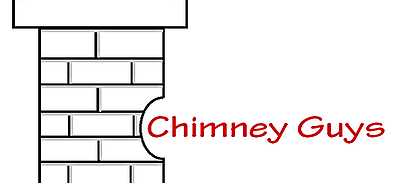Chimney Liners
Chimney liners are important.
Not only does a good chimney liner make your fireplace more safe, but it also makes it more economical. There are 2 general types of chimneys:
- Masonry fireplaces -built entirely of bricks, stone or blocks and mortar, with or without a tile-lined flue.
- Factory built fireplaces -consisting of a lightweight metal firebox and a metal chimney.
There are also a hybrid chimneys that most commonly have a metal firebox and a smoke chamber coupled to a regular brick chimney. If there is no liner, one will need to be installed. If the tiles are cracked or if joints are missing between the tiles, this will need to be repaired by either filling the joints with fireguard, replacing the tiles or installing a new liner.

Types of Chimney Liners
Standard fireplace relining requires opening the top of the chimney, opening an exterior access hole or removing the firebox, damper and clay tiles. A heavy duty liner is then installed, insulating between the new liner and the bricks.
Additional work may be required such as:
- repairing or maintaining the smoke chamber
- rebuilding the top of the chimney and exterior access (or Door)
- Upgrading the damper system
We use different liners depending on the unit you have:
304 – Wood or Pellet burning units
316 – Wood, Coal, Oil, Gas or Pellet Burning
Heavy Duty Liners
Wall thickness .018” – designed to give maximum draft, 304 – alloy has a lifetime transferable warranty for wood burning and Pellet applications. The 316 –alloy has a lifetime transferable warranty for wood, coal, oil, pellet and non-condensing gas
Light Duty Liners
These liners are typically used in wood stove insert installations, although they can be much cheaper than a heavy-duty liner, you do sacrifice the durability of the liner for the price.
Insulation
Ceramic Wool
Ceramic Wool is made of special ceramic fibers that resist separation, making it perfect for installations with bends and offsets. It also helps to center your liner properly in the chimney. Two wraps of ¼” foil-face wrap meets the UL 1777 zero clearance listing. One wrap of ½” foil face flex wrap meets the UL 1777 zero clearance listing. Seams are sealed with foil tape and covered with mesh.
Chimney Insulation
As a UL listed product, it provides superior strength and stability to masonry chimneys. It effectively insulates the liner and maintains consistent liner temperatures. As a result, it reduces condensation, increases efficiency and aids in a quick start-up, helping establish draft and greatly reduces spillage.
FireGuard
FireGuard is a pure ceramic system specifically designed to correct missing mortar joints within flue liners. FireGuard is the only certified ceramic resurfacing and mortar joint repair system employing pinpoint vibration; which promotes maximum penetration of tight mortar joints. Without pinpoint vibration, the ceramics do not penetrate tight openings.
- FireGuard‘s temperature rating is 3,205 F; which is the highest rating in the industry.
- The FireGuard process typically costs less than relining.
- The FireGuard process does not appreciably decrease the area of the original flue; consequently, the performance of the fireplace or appliance will not change.
- The FireGuard process is usually completed in less than a day, with much less disturbance to the inside of the home, since the flue liners are not removed.
- Since 2003, the patented FireGuard system has been successfully installed nationwide.
A limited, lifetime, factory guarantee against material failure is provided with every FireGuard mortar joint repair and a twenty-five year, limited factory guarantee against material failure is provided with every FireGuard resurfacing repair.
Note: While most of our liners come with a limited lifetime warranty, this warranty is void if not inspected annually by a licensed chimney technician. When servicing a warranty we will follow the manufacturer’s procedures for the warranty.
